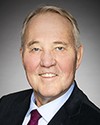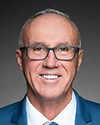As I said, Justice Bastarache said in his report, “This is a long-term endeavour that requires vision, leadership and determination over a decade or more.” This means taking strong action now to set the foundation to support long-term change, and that's exactly what we're doing.
I was given a mandate to modernize the organization and its culture, so preventing harassment and bad behaviour of all kinds means establishing the foundation to attract and retain the right people, because we have a healthy workplace that is barrier-free. We need to support our employees to deal with workplace issues at the earliest point, and create a culture where people are not afraid to speak up.
This will not be accomplished by checking a box on the latest report. We need to challenge our norms. We need to be creative and open. We need to listen to the people most affected, build relationships of trust and stay focused on the long term.
Since I took the chair, we have set a more holistic path forward. My goal is to ensure that, no matter who sits in this chair, change will continue because we've set up the right foundation. We have focused on four areas: accountable governance; inclusive leadership; equity, diversity and inclusion; and trusted resolutions mechanisms. By staying the course, we have already moved the yardsticks on many of the themes identified in this report.
I won't get into a long laundry list, but I do want to focus on what I sincerely believe to be the most significant areas of change.
First, we have improved the diversity at the top. It has both symbolic and real impacts. Not only can diverse people see themselves in our most senior leaders but our decision-making is much better. My senior executive team is more diverse and more balanced, whether it be gender, civilian or other forms of diversity.
More than 50% of our commanding officers are female, as an example. It has improved the discussions we have and changed how we approach issues in the RCMP. We're also working with our external management advisory board, which brings even more expertise and diversity.
Second, we have worked hard to develop a new model to deal with harassment complaints. I am glad to say that the independent centre for harassment resolution will be launched by June 30, 2021. It's in line with the recommendations. It's outside the chain of command, and it uses external investigators to ensure it is trusted and unbiased.
We believe this will improve trust and give people the confidence to speak out. The centre is also focused on prevention, providing informal conflict management tools to deal with things at the lowest level and to analyze what works to prevent such behaviour.
We have more to do. We will soon launch an external review of our conduct process and disciplinary measures to make sure our sanctions are effective and in line with modern expectations.
Third, we have new tools to detect and eliminate systemic discrimination. Gender-based analysis plus is an approach we rolled out across our organization, starting with our senior decision-making. It gives us the lens we need to identify barriers faced by women and diverse groups, and to see things in a different way.
The GBA+ has led to many specific but meaningful changes: Our uniforms are more inclusive. Our promotion process is more equitable. Our awards and recognition policies now recognize leave without pay for parental leave when counting years of service, and we've removed barriers in our recruitment process for our northern applicants.
These are just a few examples, but together they really do amount to a lot.
We also recently launched the first-ever RCMP equity, diversity and inclusion strategy to guide and measure improvements across the RCMP.
Fourth, we have made a commitment to a modern recruitment process, and we are taking the time to get it right. It starts, obviously, with figuring out who we're trying to attract in 2021. Times have changed, and so have expectations.
The role of a police officer is complex, and we know it requires a wide range of skills. We've worked with external experts to define the attributes and characteristics needed for modern policing. We're identifying new tools to assess the characteristics we're looking for, including screening for things like racist and sexist beliefs, which was brought up by this committee in a previous session.
We have made changes to our recruitment strategies to make sure our recruiters reflect the diversity we seek. We continue to review each part of our recruitment process to make it modern and barrier-free.
Lastly, we made a commitment to building leaders. Leadership and the tone at the top is one of my biggest priorities. Having a more diverse set of leaders around me has been so important. We have started to implement a leader character approach to our leadership development and training.
In the past, we've done a good job at measuring and developing operational skills, but now we need to do the same to help us assess and develop overall character and good judgment. We think the “leader character” model will be a game-changer in ensuring we have the right people doing the right job. It's an approach that we want to integrate from the start with applicants and continue to build throughout our employees' careers.
My vision is an RCMP that attracts great people into a workplace that welcomes and includes them and embraces diversity. This is the key to delivering excellence in our organization.
I've given you just a few examples of where we've implemented real changes. I feel and I see the changes every day. I also acknowledge that there are still key issues to address in our organization and in our society as a whole to achieve equity. The independent assessor touched on a few, such as better support for parents, which is important to women's participation in the workforce and in any sector.
Our vast geography, however, creates even bigger challenges, and it can be hard to find the supports and the resources we need to fully support our employees. We need to have creative solutions, which are not always about more resources but about finding new ways of doing things. For example, we look at different service delivery models that will benefit both communities and our employees, like the fly-in models we use in some northern jurisdictions.
I don't have the full set of solutions here today, but I do know that we won't achieve equity unless we work together and address these larger issues. I am so committed to continue to advance change and modernization, as is my entire senior executive team. I'm committed to listening to the people most affected and continuing to expand that circle.
I am committed to partnering with others to explore what we can do to address these issues, so I do truly welcome your comments, ideas and suggestions. Your expertise and influence will allow my team to find solutions. I look forward to your discussion today.
Thank you.



